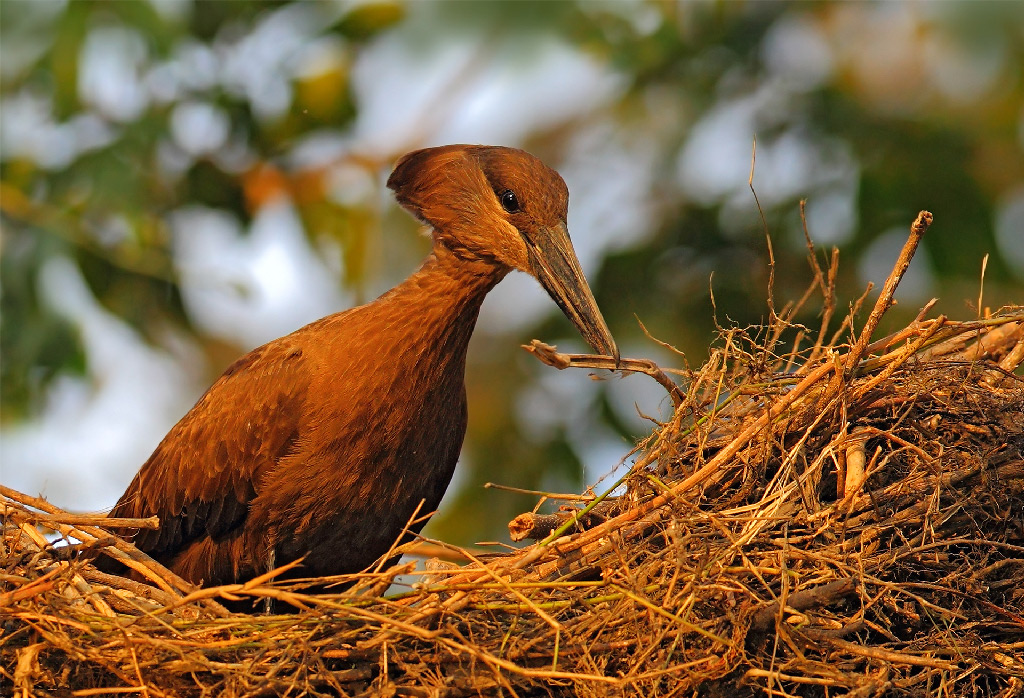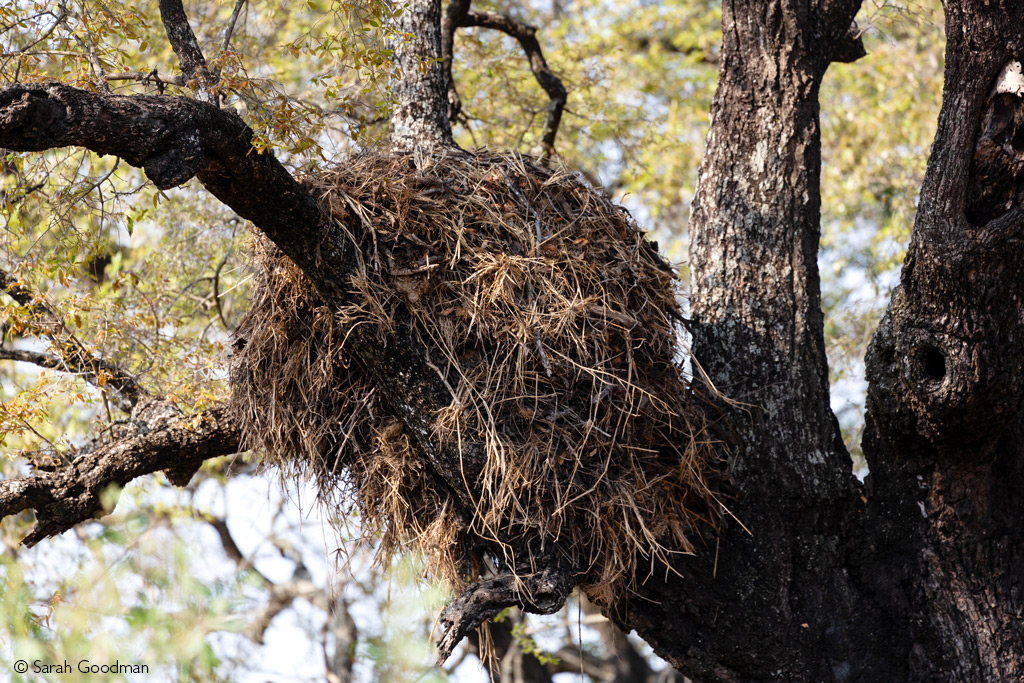The hamerkop nest is an engineering work of astonishing proportions. Breeding pairs of these medium-sized wading birds spend months meticulously placing carefully selected sticks to create one of the largest nests of any individual bird in the world. However, not every bird species is as diligent when it comes to nest building, and sometimes, it is more energy-efficient to take advantage of the hard work of others. Scientists from the University of KwaZulu-Natal in South Africa have trawled through existing research and combined this with observational research to determine which species use hamerkop nests for breeding purposes.

In all fairness to the somewhat cheeky nest usurpers, building a nest is an activity that demands considerable investment in time and energy. Like cuckoos outsourcing chick rearing, opting for the easy route and avoiding construction fuss where possible is a sensible breeding strategy. And in nest terms, a hamerkop nest is positively palatial. These twig structures may measure over 1.5 metres in diameter, weigh over 50kgs, and can include 8,000 sticks. They include a sizeable internal chamber where chicks can be raised to fledging in relative luxury. It should come as no surprise that these structures offer appealing housing alternatives to other species. This is even more true because some hamerkop pairs are what researchers have termed “compulsive” nest builders and may construct and then abandon several nests every year.


So which birds have learned to adopt the natural version of possession being nine-tenths of the law? Using data from 18 different African countries, the authors found 251 reports of 20 bird species utilising hamerkop nests. Six of these – barn owls, knob-billed ducks, Egyptian geese, Dickinson’s kestrel and Verreaux’s eagle-owls – actively kicked the hamerkop pairs out of their nests. Knob-billed and African black ducks, Egyptian and African pygmy geese, Dickinson’s and grey kestrels, barn and Pel’s fishing owls and Verreaux’s eagle-owls were all found to utilise the inner chamber.
In contrast, spur-winged geese, several stork species, hooded vultures, martial eagles, and spotted eagle-owls were only observed using the top of the hamerkop nest. In some cases, the hamerkop pairs continued to occupy the inside of the nest while other species settled on the roof.
 Keen to see hamerkops in the bushveld? Check out our many options for travelling in Africa. We have ready-made safaris to choose from – or ask us to build your perfect African safari just for you.
Keen to see hamerkops in the bushveld? Check out our many options for travelling in Africa. We have ready-made safaris to choose from – or ask us to build your perfect African safari just for you.

Most of the identified species can and do make nests of their own, suggesting that their use of hamerkop nests is mainly opportunistic. However, the barn owl – which was by far the most commonly reported species – does not make a nest at all and appears to be heavily reliant on hamerkop nests in some areas. There is a possibility that grey kestrels may also exclusively breed in hamerkop nests. The authors also emphasise that the list of species using these nests will likely be far more extensive than those identified in this paper. As such, they suggest that further in-depth field studies could be highly worthwhile.
Reference (available through a paywall)
Gula, J. and Downs, C. T. (2023) “Second-Hand Housing: A Review of Avian Species Using Hamerkop Nests for Breeding,” African Zoology, 58(1), pp. 1–5
To comment on this story: Login (or sign up) to our app here - it's a troll-free safe place 🙂.![]()






